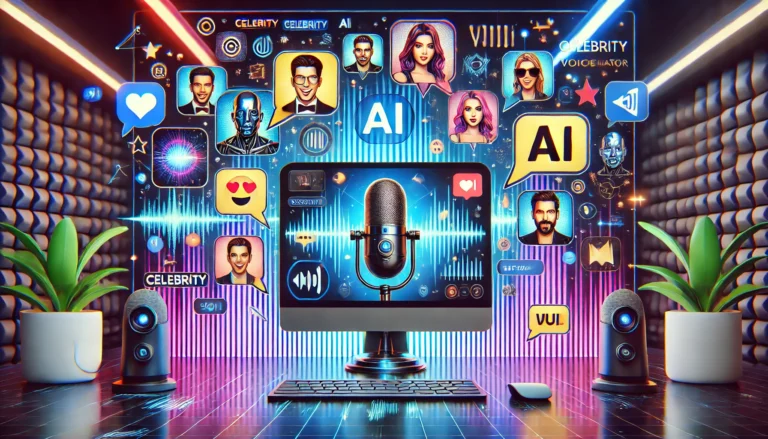Did you know that businesses using AI to personalize customer interactions see a 20% increase in sales on average? This striking statistic illustrates the transformative power of artificial intelligence in today’s customer journey.
As AI becomes more integrated into sales and support processes, it’s essential for teams to adapt and leverage these technologies effectively.
This comprehensive guide will delve into how sales and support teams can navigate and thrive in the AI-powered customer journey.
Replace Your Call Center with AI and Cut Cost 90%
Understanding the AI-Powered Customer Journey
An AI-powered customer journey leverages artificial intelligence to enhance every interaction a customer has with a brand. This journey is characterized by:
- Personalized Interactions: AI uses data to tailor interactions based on individual customer preferences.
- Predictive Analytics: AI predicts future customer behaviors and needs, enabling proactive engagement.
- Automated Processes: AI automates routine tasks, allowing for faster and more efficient service.
Key Differences Between Traditional and AI-Powered Customer Journeys
Traditional customer journeys rely heavily on manual processes and generic interactions. In contrast, AI-powered journeys are dynamic and personalized, offering a more engaging and efficient experience. Key differences include:
- Data Utilization: AI leverages vast amounts of data to personalize experiences, whereas traditional methods often use limited data.
- Speed and Efficiency: AI can process and respond to customer inquiries instantly, while traditional methods may involve delays.
- Proactivity: AI anticipates customer needs and actions, whereas traditional approaches are typically reactive.
The Role of Data and Machine Learning in Shaping the Customer Journey
Data and machine learning are the cornerstones of the AI-powered customer journey. By analyzing large datasets, machine learning algorithms can identify patterns and insights that drive personalized and efficient customer interactions. Key roles include:
- Customer Segmentation: AI categorizes customers into segments based on behavior, preferences, and demographics.
- Recommendation Engines: AI suggests products or services based on past customer behavior and preferences.
- Sentiment Analysis: AI analyzes customer feedback and sentiment to improve products and services.
Benefits of AI for Sales and Support Teams
AI provides deeper insights into customer behavior, allowing sales and support teams to personalize their interactions effectively. Benefits include:
- Targeted Marketing: Personalized campaigns based on customer data increase engagement and conversion rates.
- Customized Support: AI enables support teams to offer tailored solutions, enhancing customer satisfaction.
Improved Efficiency and Response Times
AI automates repetitive tasks, freeing up time for sales and support teams to focus on complex issues. This results in:
- Faster Response Times: AI-driven chatbots and virtual assistants provide instant responses to customer inquiries.
- Streamlined Processes: Automation of routine tasks reduces manual workload, increasing overall efficiency.
Predictive Analytics for Better Decision-Making
AI-powered predictive analytics help sales and support teams make informed decisions by:
- Identifying Trends: AI analyzes data to identify emerging trends and opportunities.
- Forecasting Sales: Predictive models provide accurate sales forecasts, helping teams set realistic targets and strategies.
Examples of Successful AI Integration
Several companies have successfully integrated AI into their sales and support processes. For example:
- Amazon: Uses AI to recommend products based on customer browsing history, resulting in higher sales.
- Spotify: Employs AI to create personalized playlists, enhancing user engagement and retention.
Adapting Sales Strategies to AI-Powered Customer Journeys
AI can significantly enhance lead generation and qualification by:
- Identifying High-Quality Leads: AI analyzes data to identify leads most likely to convert.
- Automating Outreach: AI-driven tools can automate initial outreach, ensuring timely and consistent communication.
Using AI to Personalize Sales Pitches and Communications
Personalized sales pitches are more likely to resonate with customers. AI helps by:
- Analyzing Customer Data: AI provides insights into customer preferences and pain points, allowing for tailored pitches.
- Optimizing Communication: AI suggests the best times and channels to reach customers, increasing engagement.
AI Tools for Sales Forecasting and Performance Tracking
AI tools provide accurate sales forecasts and track performance by:
- Predictive Models: AI predicts future sales trends based on historical data.
- Performance Dashboards: Real-time dashboards display key performance indicators (KPIs), helping teams stay on track.
Training Sales Teams to Work with AI Technologies
Effective AI integration requires that sales teams are adequately trained. Key training areas include:
- Understanding AI Tools: Training on how to use AI-powered tools effectively.
- Interpreting AI Insights: Teaching teams to interpret AI-generated data and insights for better decision-making.
- Ethical AI Use: Ensuring that teams understand the ethical implications of AI and use it responsibly.
Enhancing Customer Support with AI
AI-driven chatbots and virtual assistants provide instant support, improving customer satisfaction. Benefits include:
- 24/7 Availability: AI chatbots offer round-the-clock support, ensuring customers always have access to assistance.
- Consistent Service: Chatbots provide consistent and accurate responses, enhancing the customer experience.
Automated Ticketing and Resolution Systems
AI automates ticketing and resolution processes, resulting in faster issue resolution. Key features include:
- Automated Ticket Generation: AI generates support tickets automatically, reducing manual workload.
- Prioritizing Issues: AI prioritizes tickets based on urgency and importance, ensuring critical issues are addressed first.
Real-Time Support Through AI-Powered Tools
AI-powered tools provide real-time support, allowing for immediate issue resolution. Benefits include:
- Instant Responses: AI tools can respond to customer inquiries in real-time, reducing wait times.
- Proactive Support: AI predicts potential issues and offers solutions before customers even realize there’s a problem.
Ensuring a Seamless Handoff Between AI and Human Agents
A seamless transition between AI and human agents is crucial for maintaining a positive customer experience. Strategies include:
- Clear Handoff Protocols: Establishing clear protocols for when and how to transfer customers from AI to human agents.
- Maintaining Context: Ensuring that human agents have access to the interaction history to provide continuity.
Overcoming Challenges in AI Adoption
Overcoming fears and misconceptions about AI is essential for successful adoption. Common concerns include:
- Job Loss: Address fears of job displacement by highlighting how AI can augment rather than replace human roles.
- Data Privacy: Ensure customers and employees understand how AI handles and protects data.
Ensuring Data Privacy and Security in AI Implementations
Data privacy and security are paramount when implementing AI. Best practices include:
- Data Anonymization: Removing personally identifiable information from data sets to protect privacy.
- Secure Data Storage: Implementing robust security measures to protect data from breaches.
Strategies for Smooth Integration of AI with Existing Systems
Integrating AI with existing systems can be challenging. Strategies for smooth integration include:
- Phased Implementation: Gradually introducing AI technologies to minimize disruption.
- Integration Testing: Conducting thorough testing to ensure AI tools work seamlessly with existing systems.
Change Management and Training for Staff
Effective change management and training are crucial for successful AI adoption. Key components include:
- Communication: Clearly communicating the benefits and objectives of AI adoption to all stakeholders.
- Training Programs: Providing comprehensive training programs to equip staff with the necessary skills.
Key Performance Indicators (KPIs) to Track
Measuring the success of AI integration involves tracking various KPIs, including:
- Customer Satisfaction: Tracking metrics like Net Promoter Score (NPS) to gauge customer satisfaction.
- Response Times: Measuring how quickly AI tools respond to customer inquiries.
- Sales Performance: Monitoring sales metrics such as conversion rates and average deal size.
Tools and Methods for Measuring AI Impact
Several tools and methods can help measure the impact of AI on the customer journey, including:
- Analytics Platforms: Using platforms like Google Analytics to track customer interactions and behaviors.
- Customer Feedback Surveys: Gathering feedback through surveys to understand customer experiences with AI tools.
Continuous Improvement and Optimization Strategies
Continuous improvement is essential for maximizing the benefits of AI. Strategies include:
- Regular Audits: Conducting regular audits of AI systems to identify areas for improvement.
- Customer Feedback: Using customer feedback to refine and optimize AI tools and processes.
Real-World Examples of Measuring Success with AI
Several companies have successfully measured and optimized their AI initiatives. For instance:
- Netflix: Uses AI to analyze viewer preferences and optimize content recommendations, resulting in higher viewer satisfaction.
- Zappos: Employs AI to personalize customer interactions, leading to increased sales and customer loyalty.
Conclusion
Adapting to the AI-powered customer journey is essential for sales and support teams to remain competitive. By leveraging AI technologies, teams can enhance customer insights, improve efficiency, and provide personalized experiences.
However, successful AI adoption requires careful planning, training, and a focus on data privacy and security. By following the strategies outlined in this guide, your sales and support teams can effectively navigate and thrive in the AI-powered customer journey.






